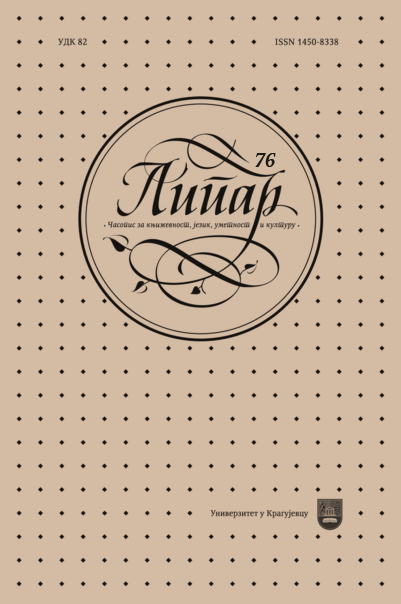ТРОП ВОЗА КАО СИМБОЛ ТРАУМЕ У КЊИЖЕВНОСТИ ХОЛОКАУСТА
TRAIN TROPE AS TRAUMA SYMBOL IN HOLOCAUST LITERATURE
Author(s): Milica M. KarićSubject(s): History, Language and Literature Studies, Jewish studies, Studies of Literature, Recent History (1900 till today), Jewish Thought and Philosophy, Comparative Study of Literature, WW II and following years (1940 - 1949), Fascism, Nazism and WW II, History of the Holocaust, History of Antisemitism
Published by: Универзитет у Крагујевцу
Keywords: World War II;Holocaust;literature;memory;remembering trauma;train
Summary/Abstract: Traumatic experience such as the Holocaust requires traumatic ways of representation. Those who dare to write about it encounter various dilemmas and difficulties in finding the right ways to write about something that cannot be written about. Train trope is a usual symbol of the biggest XX century trauma because rail- way system and different types of cars enabled transportation of millions of people from the whole Europe, whose lives were terminated in the death camps, as well as their wealth, gold and other valuables. Trains found their way in literature with both survivor writers and those who didn’t experience the Holocaust. The symbol of train had been interpreted within psychoanalysis of dreams as passage of time and life before it started to operate as a symbol of the very death in reality. In this paper we tried to investigate how train trope functions in this trauma based literary genre with those writers who were inside and those who felt them as cultural heritage. Those who were inside death trains, such as Elie Wiesel, insisted that the only way of representation has to be in documentary and realistic style. On the other hand, writers who were lucky not to experience the hell on Earth couldn’t write from the ‘inside’ and had to find other ways of representation. Their styles vary from allegory in Kosinsi’s autofictional novel to magic realism in David and Thomas’s novels. Thomas also adds Freudian psychoanalysis while Pinter experiments with stage representation.
Journal: Липар - часопис за књижевност, језик, уметност и културу
- Issue Year: XXII/2021
- Issue No: 76
- Page Range: 69-92
- Page Count: 24
- Language: Serbian

